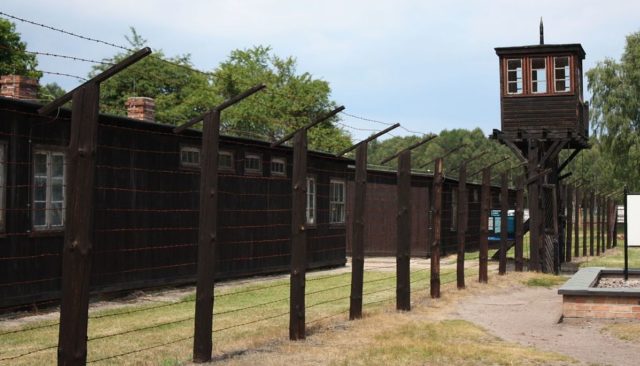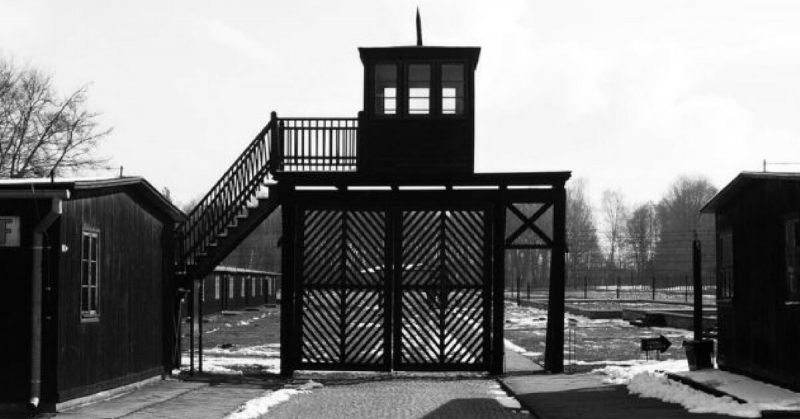Life in a prisoner of war camp could be hard and dangerous during the Second World War. It was even more so for ten British POWs when, despite their own hazardous position, they chose to save a Jewish person from death.
Last Months of the Holocaust
It is hard for any rational person to understand the mindset behind the Third Reich. It was a regime that undertook the murder of millions of its own citizens and also those in countries it conquered. To the Nazis, this annihilation was not only justifiable but through the logic of their twisted moral code, it was righteous and necessary.
Even harder to comprehend is the frenzy that took hold in the dying months of WWII. The Allies were closing in, and yet they still diverted resources away from the fighting to continue their acts of industrialized murder. It was their last chance to wipe out those they saw as less than human. In the face of defeat, they continued.
Sara’s Death March
In January 1945, a death march set out from the German concentration camp – Stutthof, in occupied Poland. 1,200 female prisoners were marched toward the Baltic coast. It was intended to break them in body and spirit, kill as many as possible and leave the rest easy to finish off.
On January 26, the march passed close to Stalag 20B, a prisoner of war camp. After two weeks of marching, only 300 prisoners remained. The guards stopped the column near a farm to continue the beating and brutalisation they had been inflicting along the way.

Among the prisoners was a sixteen-year-old Jewish girl named Sara Matuson. Breaking away from the others, she ran and hid in a barn.
“Do not Be Afraid”
The prisoners at Stalag 20B were used as labor for nearby farms and industry. On the day Sara fled from her captors, a group of British POWs was working on the farm.
One of the prisoners, Stan Wells, found Sara hiding in a feeding trough in the barn. He reassured her, telling her not to be afraid. Fetching bread from the farmhouse, he gave it to the starving young woman while he considered what to do next.
A Dangerous Conspiracy
Wells approached his fellow POWs and told them about Sara. He needed their assistance if he was to help her survive.
Any act of defiance against the increasingly desperate Nazis was a dangerous thing. The prospect of being caught with Sara made the men incredibly nervous, but they wanted to help.
The POWs found food, water, and clothes for Sara. They provided paraffin to use against the lice in her hair. Hiding her among them, they walked to another hiding place in a barn nearer their camp.
Caring for the Sick
Sara was in terrible shape. Starvation at the hands of her captors had taken a wretched toll. Her cheeks were sunken; the flesh was gone from her body, her eyes were wide in a face of skin and bone. Bill Fisher, one of the POWs, wrote that he could easily get his thumb and forefinger around her upper arm. Frostbite and badly fitting footwear were destroying her feet. Her skin was covered in sores.
The men found soap and water for Sara to get clean. One of them was a medic who saw to her injuries. They all brought her food.
Sawing through the bars of their prison, the POWs created a way to get out and visit Sara regularly. Sneaking past the nearby police station, they took huge risks to help her.
Under their care, Sara began the journey back from the brink of death. They smuggled her into their camp, where they talked with her in German. Schemes were discussed to create a permanent safe space for her to hide.
Moving On
After ten weeks, news came. It was early April, the German Reich was all but defeated, and the Nazis were on the run. Rather than leave the POWs where they were, they moved them on.
Sara’s saviors tried to come up with plans to ensure her ongoing care. They considered disguising her and bringing her with them, or leaving a man behind for her to take his place, or arranging for a local to retrieve her and take her to safety when they were gone.
In the end, these plans came to nothing. The POWs were not able to put arrangements in place before they were marched out, leaving Stalag 20B and Sara Matuson behind.
Laying Low
For the next few weeks, Sara hid in the barn. The war was still raging in Germany. Russia and the Western Allies were racing toward Berlin, seeking to take the richest pickings from the carcass of Germany. The young, the old, and the infirm were being mobilized in a last-ditch effort to save the Third Reich. In his Berlin bunker, Hitler was about to die at his own hand.
At last, liberation came. Emerging from the barn where she had lived in hiding for the past few months, Sara joined thousands of others displaced by the war. She reached a camp for the displaced in the Western Zone of occupied Germany. From there, she began rebuilding her life.
Giving Thanks
Sara had much to mourn. She had lost many of her family to the Holocaust. Her mother and her little sister had been on the same death march as her. They had not been so lucky as Sara.
She wrote to the Holocaust Memorial Museum in Jerusalem to get recognition for the ten soldiers who had helped her. When they had found her, the war was almost over. Despite this, they took enormous risks to save her. Freedom was theirs to grasp, and they gambled it to keep one more person safe.
It was through such acts of courage that Hitler’s dreams of total extermination of a race were thwarted, as people showed their humanity in the darkest of times.
Source:
Gordon Brown (2008), Wartime Courage.
